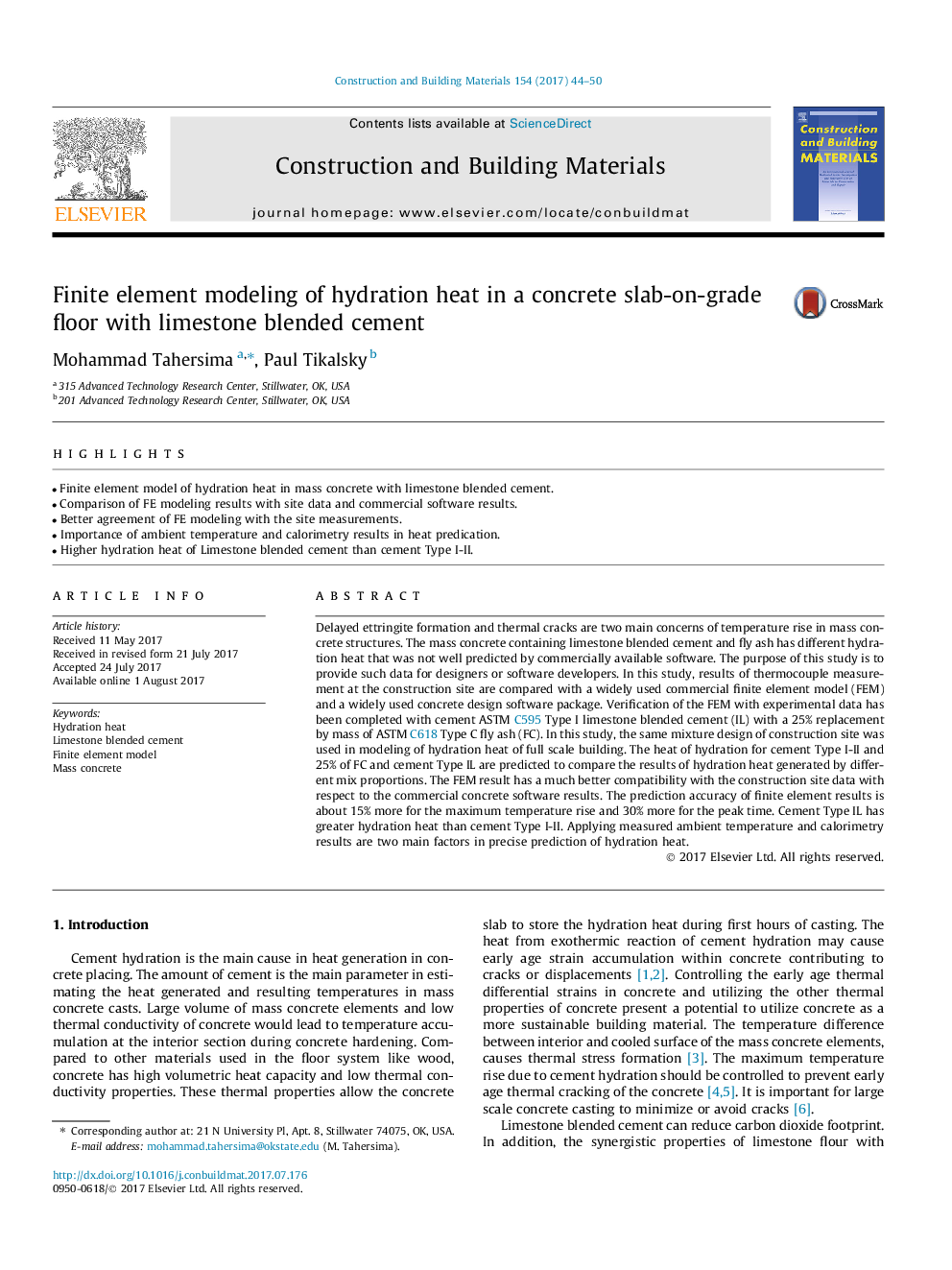| Article ID | Journal | Published Year | Pages | File Type |
|---|---|---|---|---|
| 6480046 | Construction and Building Materials | 2017 | 7 Pages |
â¢Finite element model of hydration heat in mass concrete with limestone blended cement.â¢Comparison of FE modeling results with site data and commercial software results.â¢Better agreement of FE modeling with the site measurements.â¢Importance of ambient temperature and calorimetry results in heat predication.â¢Higher hydration heat of Limestone blended cement than cement Type I-II.
Delayed ettringite formation and thermal cracks are two main concerns of temperature rise in mass concrete structures. The mass concrete containing limestone blended cement and fly ash has different hydration heat that was not well predicted by commercially available software. The purpose of this study is to provide such data for designers or software developers. In this study, results of thermocouple measurement at the construction site are compared with a widely used commercial finite element model (FEM) and a widely used concrete design software package. Verification of the FEM with experimental data has been completed with cement ASTM C595 Type I limestone blended cement (IL) with a 25% replacement by mass of ASTM C618 Type C fly ash (FC). In this study, the same mixture design of construction site was used in modeling of hydration heat of full scale building. The heat of hydration for cement Type I-II and 25% of FC and cement Type IL are predicted to compare the results of hydration heat generated by different mix proportions. The FEM result has a much better compatibility with the construction site data with respect to the commercial concrete software results. The prediction accuracy of finite element results is about 15% more for the maximum temperature rise and 30% more for the peak time. Cement Type IL has greater hydration heat than cement Type I-II. Applying measured ambient temperature and calorimetry results are two main factors in precise prediction of hydration heat.
